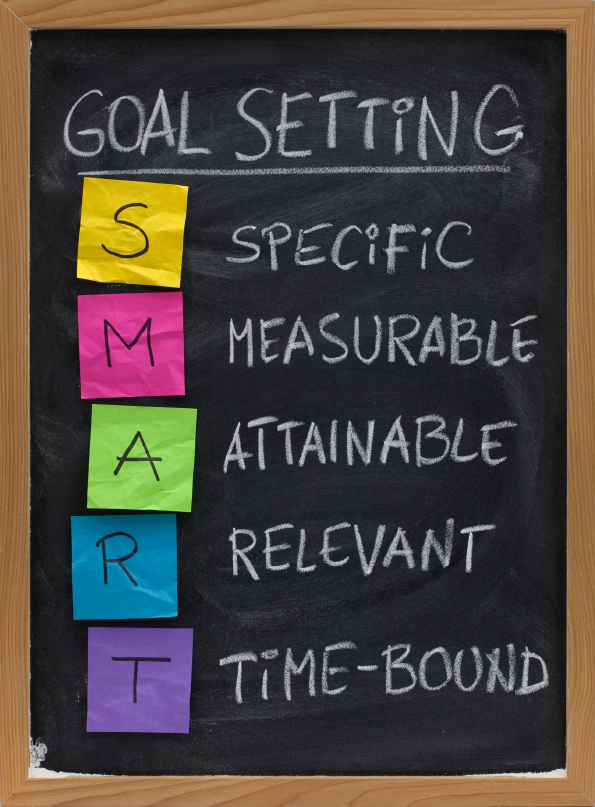Fitness
![]()
For effective goal setting, one should ask a series of questions:
Question 1: What is my goal?
How do I set goals? What is the SMART Principle and how can I apply it?
You know that physical activity, exercise, and a healthy diet are crucial to improve your overall quality of life, but you feel a little overwhelmed trying to balance all of this with your school/work schedule. This is completely normal and understandable. The CDC does a fine job telling you how to set and achieve realistic goals, using this principle and applying it to activities.
>Click on the Goal Setting (SMART) image to navigate to a blog entry on the Virginia Cooperative Extension site of Virginia Tech that clearly defines each letter of the acronym SMART on goal setting. Be ready to find out how to effectively set goals while using the SMART Principle.

>You can download your own goal setting worksheet from CDC HERE
Question 2: Why do I want to achieve this goal?
It is important that the goal you set is meaningful to you. If it is not, or you are striving to achieve it because someone else wants you to, your drive to accomplish the task will not be very powerful.
The likelihood you will complete the task and enjoy the journey is not very high if you fail to have intrinsic motivation when setting each goal.
Question 3: What type of exercise do I enjoy doing?
This is an extremely important question to ask. If you do not enjoy the mode of exercise you choose, you are not likely to stick to your training routine. This does not mean that you will be in love with every workout you do, but you should at least find it somewhat fun or feel good afterwards.
For example, let’s say your goal is to improve your cardiovascular health so you do not get winded and become a sweaty mess walking uphill to class. There are literally thousands of ways you could begin conditioning for this goal. Therefore, it is important to choose one you enjoy so you will be motivated to continue training.
Question 4: What foreseeable barriers will prevent me from reaching my goal?
Identifying what could stand in your way/prevent you from reaching your goal will better prepare you to overcome these factors when they present themselves. For example, if you know there is not enough time in a day to get everything done after class &/or you are too exhausted to exercise, perhaps you should plan to workout first thing in the morning. This way, no matter what the day presents you with, you will get your workout in. This is called being stronger than your excuses.
Question 5: What is my plan of action when an unforeseen obstacle gets in my way?
Life is full of surprises. Not realizing you had an exam this week is a perfect excuse not to exercise right? Wrong! Having a plan of how to deal with unforeseen obstacles is important so you can stay on track with your goal. For example, what if you get to the gym only to realize you forgot your gym shoes at home? Keeping an extra workout outfit and pair of gym shoes in your trunk would enable you to workout no matter what. If you didn’t think that far ahead, that’s alright, but instead of going home to sit on the couch perhaps you could grab your shoes and get moving. When it comes to exercise, it is important to remember something is always better than nothing.
Now take a minute to think about and answer the 5 questions for yourself…
- What is my fitness goal?
- Why do I want to achieve this goal?
- What type of exercise do I enjoy doing?
- What foreseeable barriers will prevent me from reaching my goal?
- What is my plan of action when an unforeseen obstacle gets in my way?
![]() >>>Proceed to the next menu link: “Barriers“
>>>Proceed to the next menu link: “Barriers“

